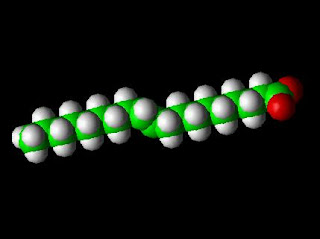 Fats
FatsFats are glyceryl ester of fatty acids. Fats, as do carbohydrates, contains the element of carbons, oxygen and hydrogen, but proportion of oxygen in fats is less, and it to be said that fats are fuel foods of more concentrated type than are carbohydrates.
Carbohydrates and fats are interchangeable as fuel foods, but it can be shown, by calorimetry, that fats produce more than twice the heat energy produced by carbohydrates.
One grams of fats yields 9 cal, while 1 gram of carbohydrates yields 4 cal. An additional advantage of fat from the view point of energy availability is that it stores well in large amount of adipose tissue. Thus fat, considered to be a reserve from of fuel for the body.
 Paradoxically, this is not advantageous in affluent societies where the problem is not availability of food energy, but rather health hazard of obesity.
Paradoxically, this is not advantageous in affluent societies where the problem is not availability of food energy, but rather health hazard of obesity.Fats may occur in foods as materials that are solid at room temperature or as oils that are liquid at room temperature.
Solid fat contain comparatively small amounts of fatty acids with two or more groups of adjacent carbons that are not fully saturated with hydrogen.
Fats


